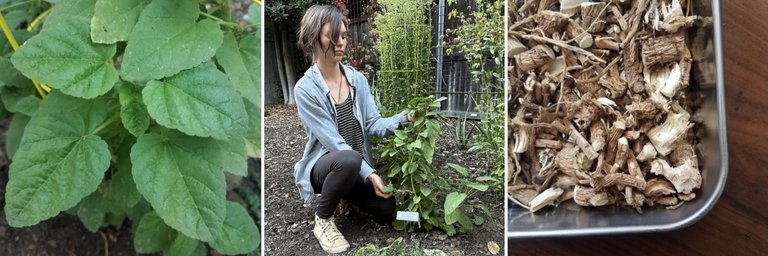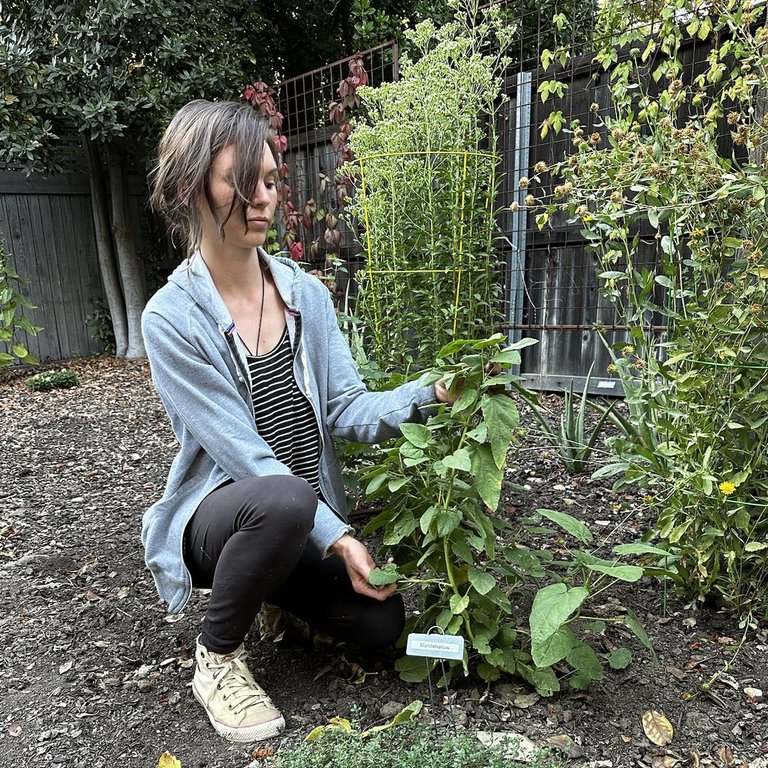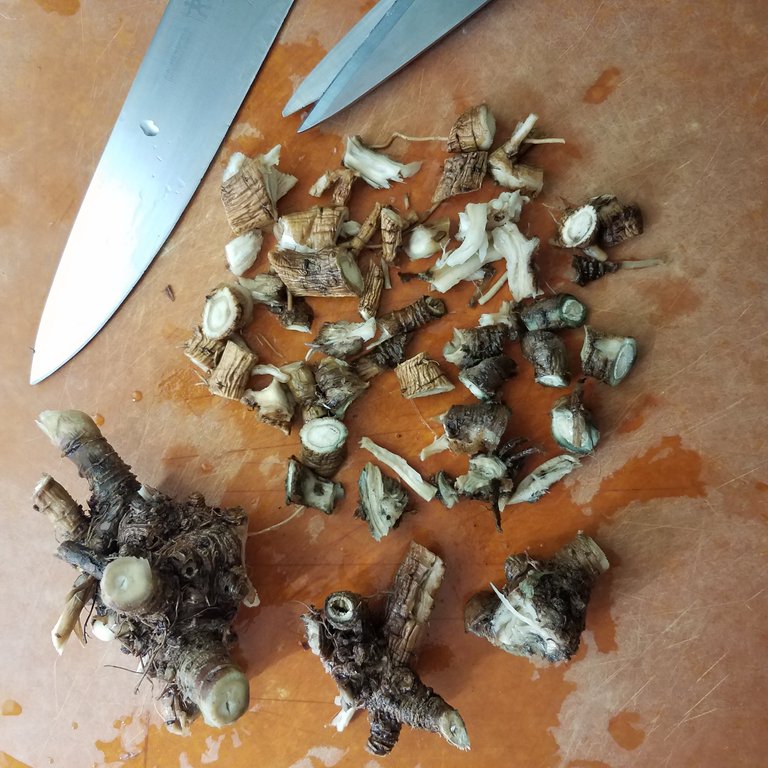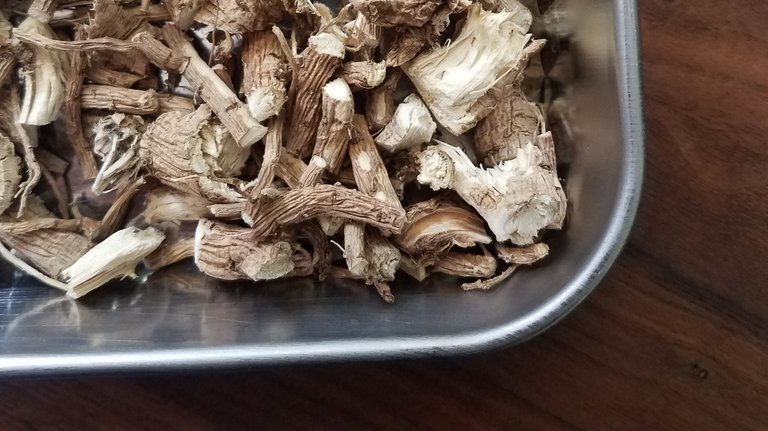Hundreds of years ago marshmallows were a tonic made with the roots of the herb marsh mallow after which the dessert was named. Blended with eggs, sugar, and then boiled in water, marshmallows were originally a vegetarian delicacy that had healing and nutritive properties. These days marshmallows are made of gelatin and refined sugar and the herb marsh mallow is used by some practitioners of natural medicine for its soothing properties both internally and externally.

Marsh mallow first came into my life when I saw a few plants growing in a nursery where I used to volunteer. To my delight I was gifted a few to plants to learn how to care for them in the garden.
How to Grow Marsh Mallow :
According to its name, this herb prefers marshy or humid landscapes. Despite this I was able to successfully grow a couple of marsh mallow plants in the fertile but arid soil of my parent's backyard. Marsh mallow needs plenty of sunlight and regular watering, so growing this plant alongside a vegetable garden or in a irrigated herbal landscape is ideal.

After a year or so of growing in the yard I noticed that the squirrels were beginning to dig up the roots which looked plump and ready to harvest. From the blurb on the tag that the plants came with I knew a bit about the herb but not enough to apply my knowledge and actually use the herb. So, as I often do in such situations, I cracked open a trusted book on herbalism to get some ideas.

Medicine of Marsh Mallow :
According to Rosemary Gladstar's Medicinal Herbs : A Beginner's Guide, it is the starch and mucilage in the roots that provide the medicine. When prepared as a tea or boiled in water to make a decoction, the starch & mucilage release a gelatin-like substance which is soothing on inflamed tissues.
Marsh mallow root recommended:
- as a tea for sore throats,
- as a tea or decoction for bladder infections
- topically to cure dry and painful skin.
A portion of the roots we used fresh in teas and the rest I wanted to store for future bladder infections and to use during cold/cough season.

In the books I mostly saw the root as an ingredient in tea mixes rather than in tinctures so drying the roots seemed to be the best route for preserving the medicine.
With the use of a super sharp knife and kitchen scissors I broke the root down into small bits and then let them dry in the oven with just the pilot light on (~120 degrees). This being a medicinal root, a constant low temperature is recommended to expel any excess humidity that would cause mold when stored long term. In the case of drying leaves and flowers, however, drying on a tray at room temperature over several days is best.

Thus far I have enjoyed the sweet & gel-like tea made from these roots and am excited to try out formulating soothing blends with other herbs. I am curious, have you ever grown or used marsh mallow? Fill me in on your experiences in the comments!
I have several marshmallow plants here. I’ve not used them medicinally. They have sweet small hollyhock-like flowers.
The flowers are so beautiful! Sadly I didnt get to take a picture when they were blooming for this post. I have heard the flowers are edible and can be used to decorage cakes.